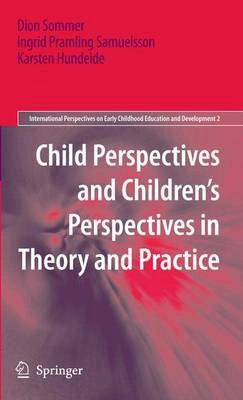

Child perspectives and children's perspectives in theory and practiceUpplaga 2010
- Upplaga: 2010e upplagan
- Utgiven: 2009
- ISBN: 9789048133154
- Sidor: 233 st
- Förlag: Springer
- Format: Inbunden
- Språk: Engelska
Om boken
Åtkomstkoder och digitalt tilläggsmaterial garanteras inte med begagnade böcker
Mer om Child perspectives and children's perspectives in theory and practice (2009)
2009 släpptes boken Child perspectives and children's perspectives in theory and practice skriven av Dion Sommer. Det är den 2010e upplagan av kursboken. Den är skriven på engelska och består av 233 sidor. Förlaget bakom boken är Springer.
Köp boken Child perspectives and children's perspectives in theory and practice på Studentapan och spara pengar.
Referera till Child perspectives and children's perspectives in theory and practice (Upplaga 2010)
Harvard
Oxford
APA
Vancouver



















